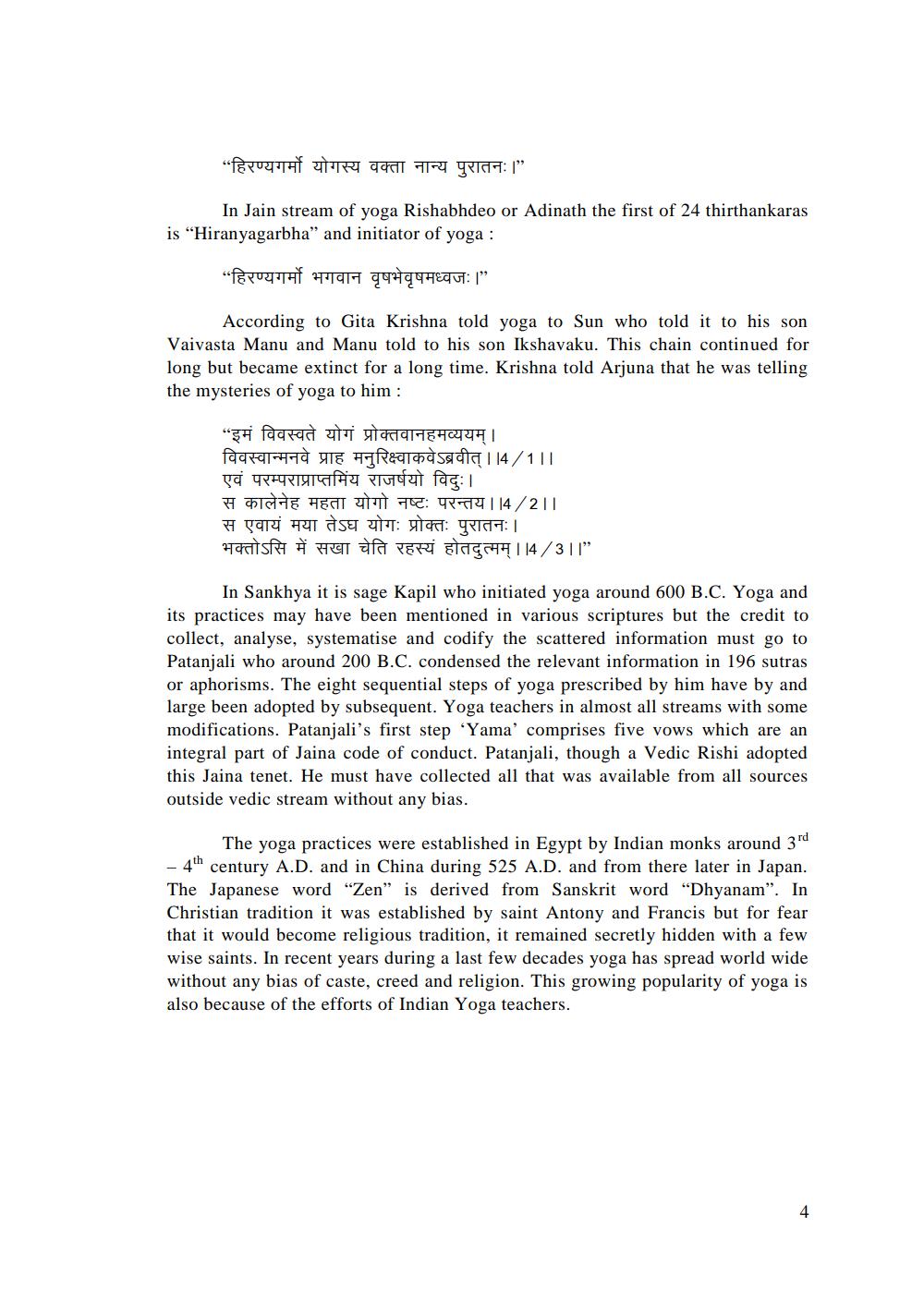________________
"Puit te ay ga: I”
In Jain stream of yoga Rishabhdeo or Adinath the first of 24 thirthankaras is "Hiranyagarbha" and initiator of yoga:
"PUTI TIF quaequt: "
According to Gita Krishna told yoga to Sun who told it to his son Vaivasta Manu and Manu told to his son Ikshavaku. This chain continued for long but became extinct for a long time. Krishna told Arjuna that he was telling the mysteries of yoga to him :
"इमं विवस्वते योगं प्रोक्तवानहमव्ययम् । faqah JIE FR& d seda i 14/111 एवं परम्पराप्राप्तमिंय राजर्षयो विदुः ।
SHE HEAT UT TI 14/211 स एवायं मया तेऽघ योगः प्रोक्तः पुरातनः । HTTS # Het af Eri gag 114/311"
In Sankhya it is sage Kapil who initiated yoga around 600 B.C. Yoga and its practices may have been mentioned in various scriptures but the credit to collect, analyse, systematise and codify the scattered information must go to Patanjali who around 200 B.C. condensed the relevant information in 196 sutras or aphorisms. The eight sequential steps of yoga prescribed by him have by and large been adopted by subsequent. Yoga teachers in almost all streams with some modifications. Patanjali's first step 'Yama' comprises five vows which are an integral part of Jaina code of conduct. Patanjali, though a Vedic Rishi adopted this Jaina tenet. He must have collected all that was available from all sources outside vedic stream without any bias.
The yoga practices were established in Egypt by Indian monks around 3" - 4th century A.D. and in China during 525 A.D. and from there later in Japan. The Japanese word "Zen" is derived from Sanskrit word "Dhyanam". In Christian tradition it was established by saint Antony and Francis but for fear that it would become religious tradition, it remained secretly hidden with a few wise saints. In recent years during a last few decades yoga has spread world wide without any bias of caste, creed and religion. This growing popularity of yoga is also because of the efforts of Indian Yoga teachers.




